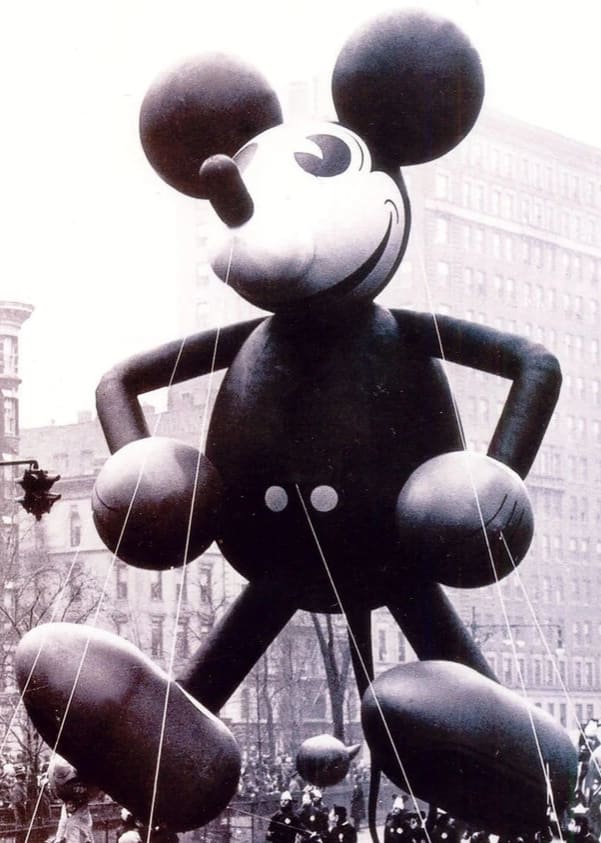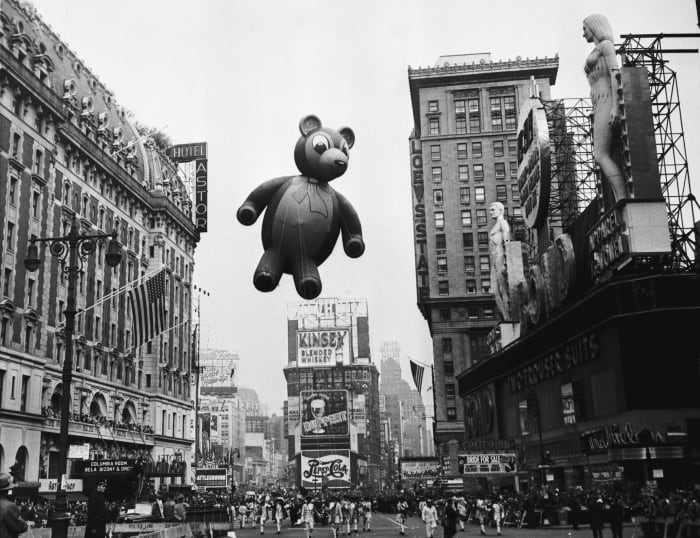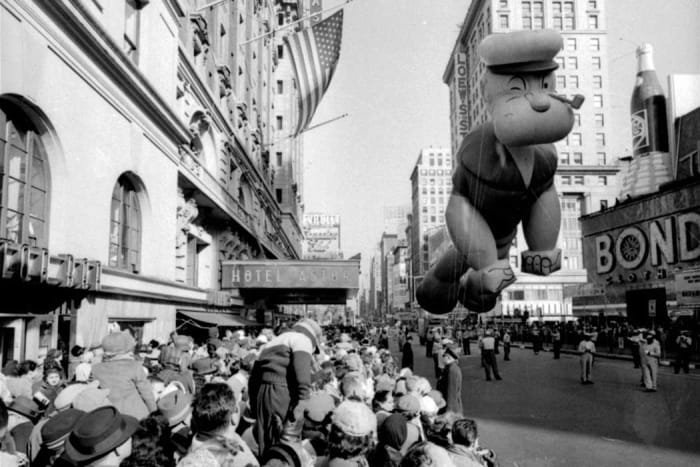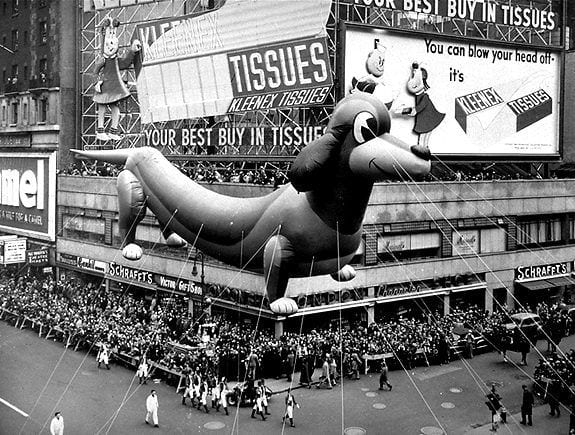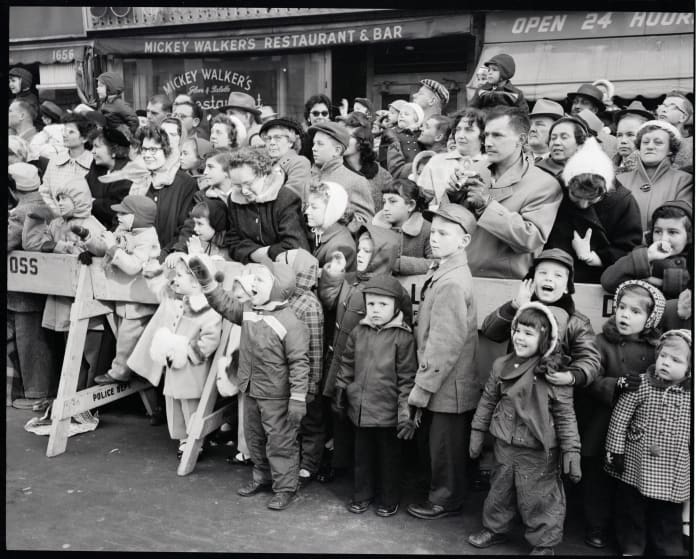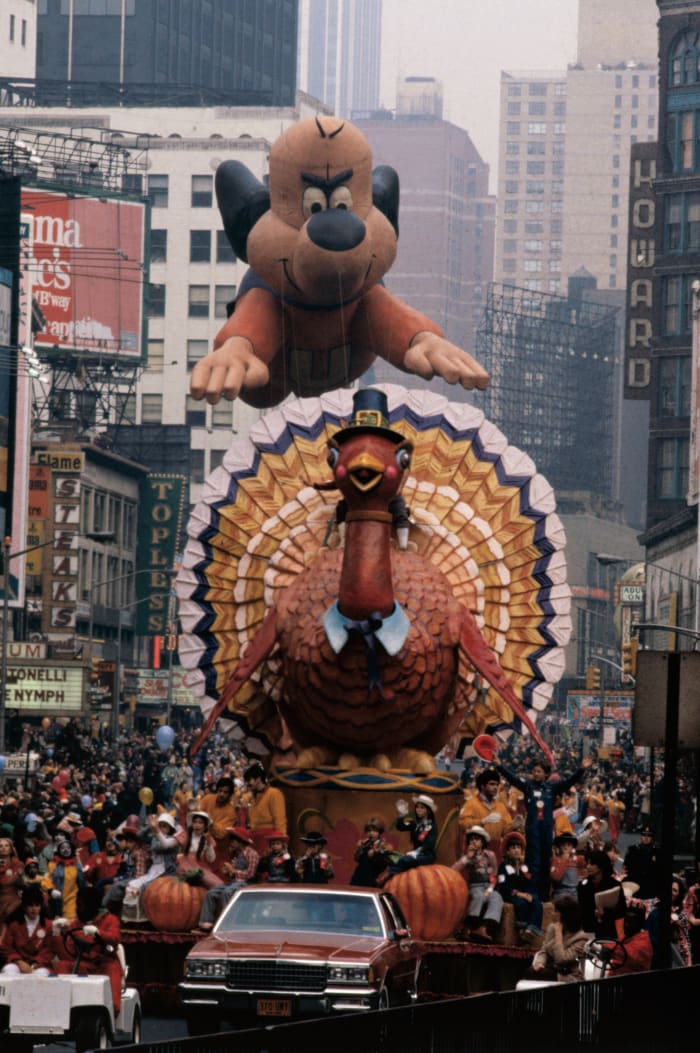Part of the cultural landscape since 1924, the Macy’s Thanksgiving Day Parade in New York is as much a holiday tradition as turkey and stuffing.
After a shortened, audience-free event in 2020 due to the pandemic, tens of thousands of spectators are expected to line Manhattan’s streets Thursday to watch the parade, and millions more will view it on NBC. There will be floats, marching bands and clowns. But the enormous balloons remain one of the biggest draws.
Here are some highlights of the nearly 100-year history of what has become one of America’s most beloved parades that normally has more than three million New Yorkers watching along the route and around an additional 50 million television viewers.
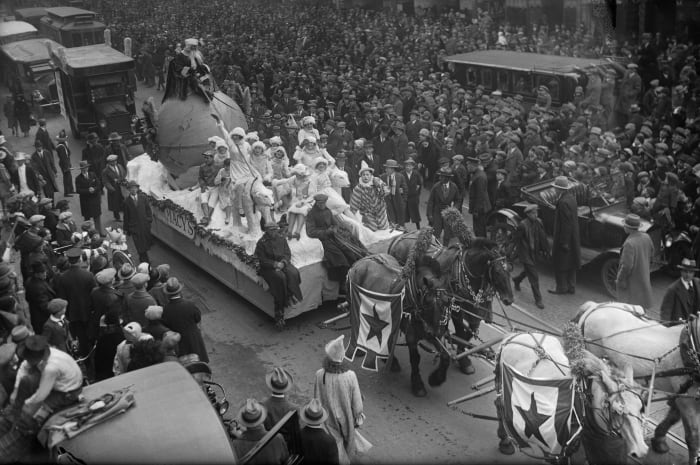
Santa Claus rides a parade float pulled by a team of horses down Broadway Street during the annual Macy’s Thanksgiving Day Parade in New York City in 1925.
Bettmann/Getty Images
1924-27: The “Macy’s Christmas Parade” (it didn’t become the “Thanksgiving Day Parade” until 1927) made its debut and marked the welcoming of Santa Claus to the city. The parade featured marching elephants, monkeys, camels, bears and other animals borrowed from the Central Park Zoo. Live animals stopped being used in the parade after 1926 and were replaced by the balloons we know today, starting with an inflatable Felix the Cat in 1927, along with a toy soldier and dragon.
1929: The balloons used to be released intentionally post-parade, with specific valves introduced in 1929 so they could float for days before landing. A monetary reward and gifts were given to those who returned the deflated balloons to Macy’s. According to TIME magazine, this tradition stopped in 1932 after a balloon interfered with a passing plane, causing it to tailspin.
1934: The first Mickey Mouse balloon made its debut. Three more Mickeys appeared in 1977, 2000, and 2009. Also debuting in 1934 was the first balloon based on a real person: performer Eddie Cantor.
1942-1944: There were no parades these years due to rubber and helium shortages caused by World War II, and the balloons that had been made were given to the government so the spare rubber could be used for war efforts.
1946: The parade was broadcast on local TV for the first time (it also had a record crowd of 2 million people), followed by national coverage in 1947. Two other big things also happened that year: the parade’s original route, which spanned roughly six miles, was cut down to less than half that distance; and parts of the classic film Miracle on 34th Street were shot during the parade. The crowd had no idea the Santa Claus that year was played by Edmund Gwenn from the film.
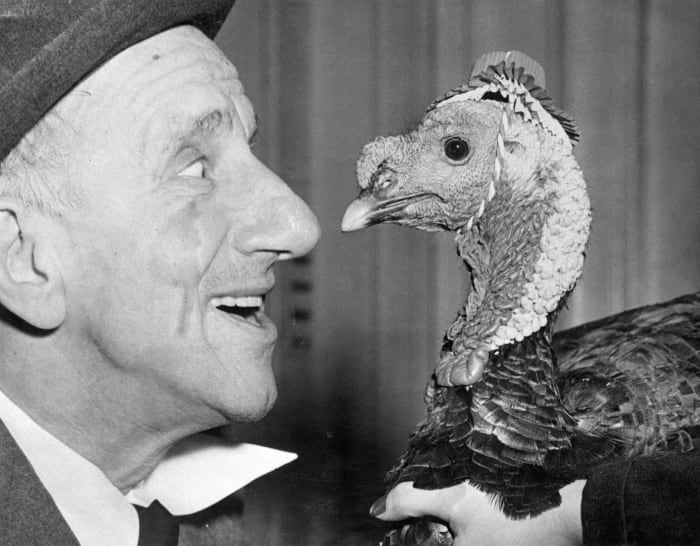
Looking a gift turkey in the eye, Jimmy Durante “noses” up to the gobbler presented to him in preparation for his role as Grand Marshal of the annual Macy Thanksgiving Day Parade in 1950. Jimmy took good care of the bird to make certain it could make the long march down Broadway with an impressive array of floats and floating giants.
Bettmann/Getty Images
1957: Popeye made his debut during rainy weather, which was bad news for parade viewers and the balloons. The top of Popeye’s hat filled with rainwater, which caused him to swerve into the spectators and dump it all over them.
1958: A helium shortage threatened to dampen the parade but after calls to Goodyear Tire and Rubber Company, Macy’s figured out a way to fill three of its giant, traditional balloons with plain air and support them using cranes.
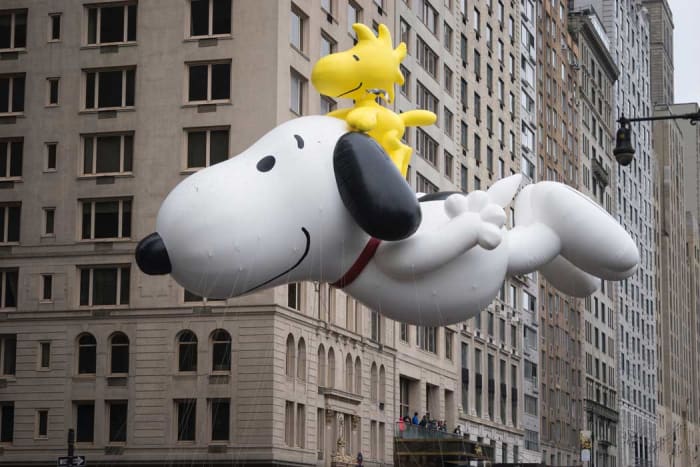
Snoopy has appeared in more than forty parades, the most of any balloon character. Snoopy has appeared as an aviator, astronaut and skater, among other characters. Here Snoopy and Woodstock cruise the Manhattan parade route in 2014.
Courtesy Zoran Milich/Getty Images
1968: Making his parade debut in 1968, Snoopy has appeared in more than forty Macy’s Thanksgiving Day Parades, the most of any other balloon character. There have been seven versions of his balloon, including Astronaut Snoopy and Millennial Snoopy.
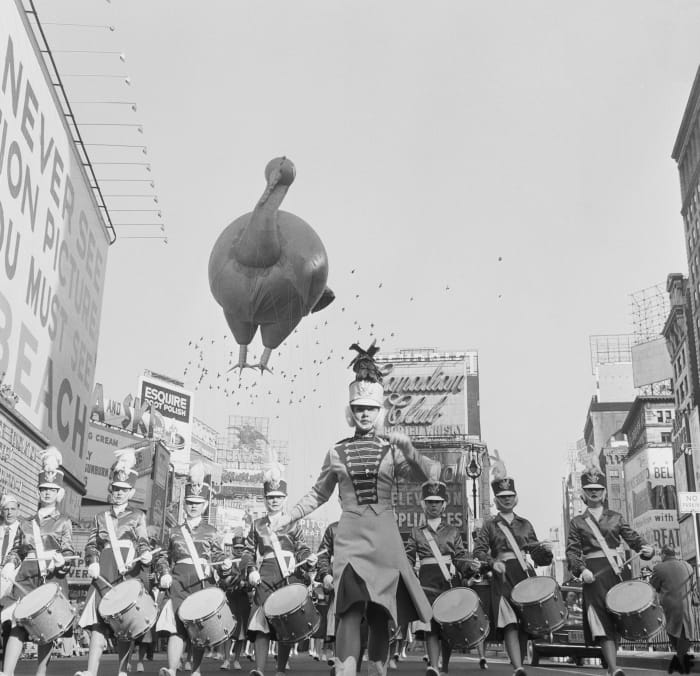
A helium-filled turkey on its way through Times Square in 1959, accompanied by a marching band.
Bettmann/Getty Images
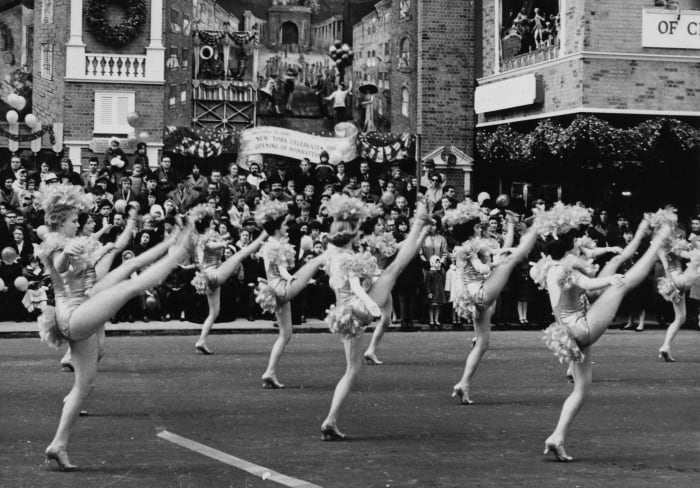
It wouldn’t be a parade without some high-kicking ladies. This group was in the 1961 parade. A number of tableaux behind commemorate landmarks in the city’s history.
Archive Photos/Getty Images
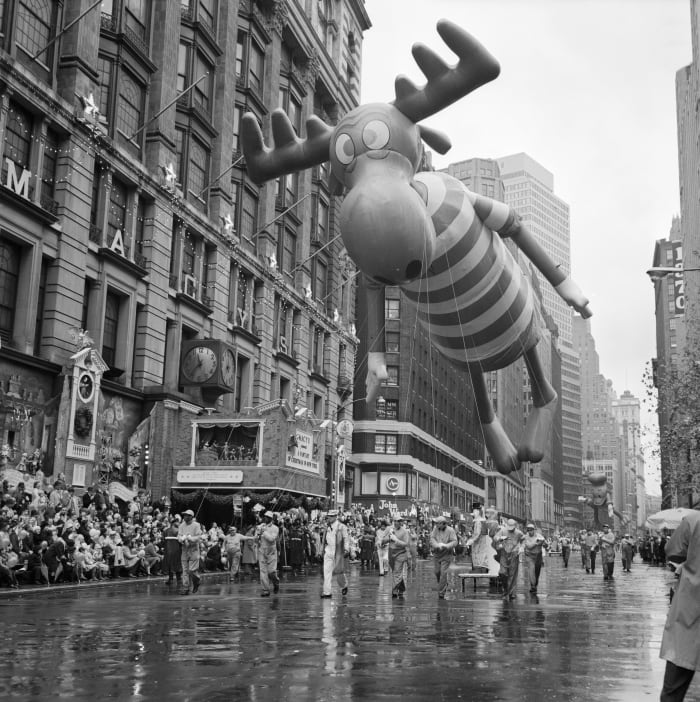
A giant Bullwinkle float looms over the crowd in the 1962 parade. Despite the weather, a large crowd came out to watch on the rainy Thanksgiving Day.
Bettmann/Getty Images
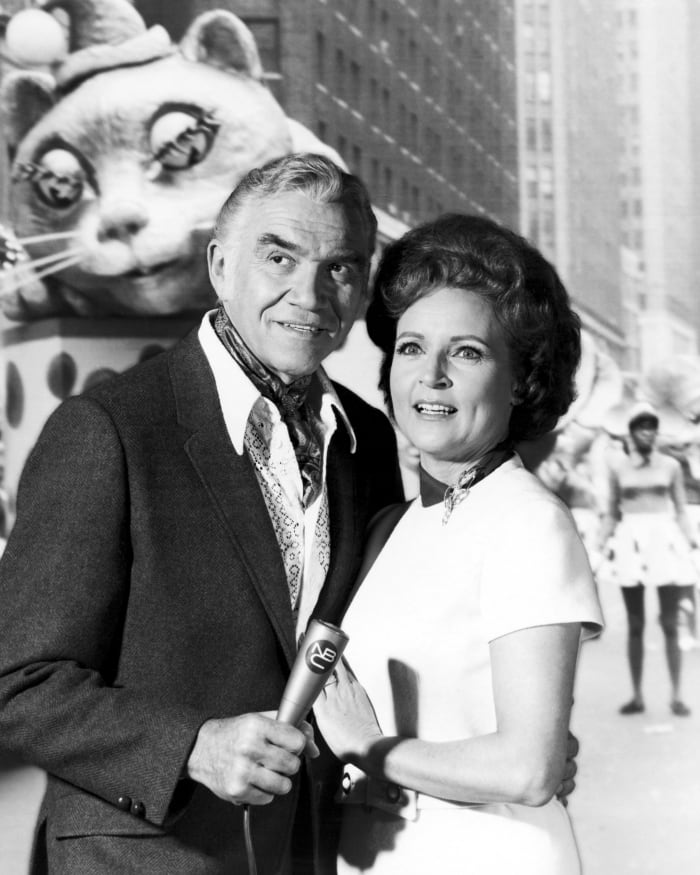
Bonanza star Lorne Greene (1915-1987) and the incomparable Betty White are photobombed by a giant float as they pose for a publicity still at the parade in 1969. The pair presented the telecast of the event for NBC television and hosted the parade every year from 1962 to 1971.
Silver Screen Collection/Getty Images
1977: Kermit the Frog debuted, and appeared again in 2002.
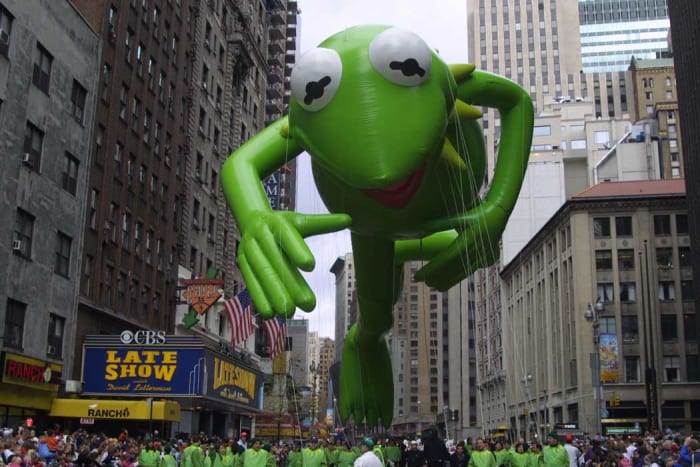
Kermit the Frog afloat in the 78th Annual Macy’s Thanksgiving Day Parade.
Image courtesy David Pomponio/FilmMagic/Getty Images
1980: The massive character balloons are also built in New Jersey, where designers have been experimenting with materials over time. Cotton fabric was originally used, then neoprene (similar to a tire’s inner tube). Each portion of any given balloon is designed as a separate chamber, so if a balloon is pierced in the face by something, the rest of its body will remain filled with helium.
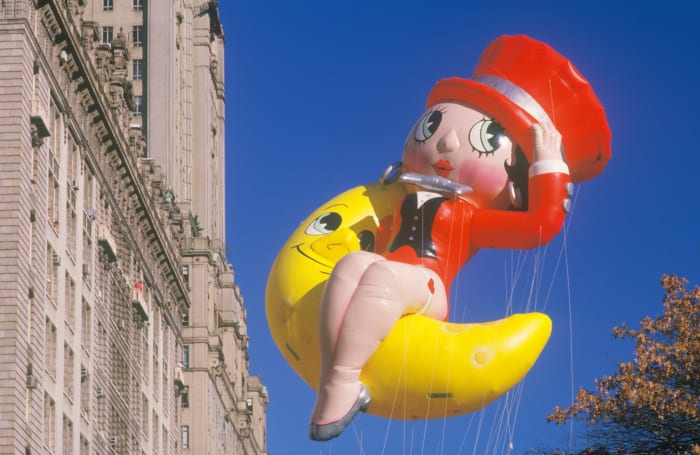
Betty Boop swingin’ on the moon in Macy’s Thanksgiving Day Parade in 1985.
Joe Sohm/Visions of America/Universal Images Group via Getty Images)
1985: Not all floats are a success. Betty Boop made her debut in the 1985 parade, but her tenure didn’t last long, ending just two years later with sporadic appearances through the 1990s.
2014: Six new giant balloons debuted, the most in a single year, including Paddington Bear.
2018: Temperatures only hit 19 degrees on Thanksgiving morning, making it the second-coldest Thanksgiving on record, but the parade marched on.
2019: The eighth version of Astronaut Snoopy made an appearance, along with the second version of Smokey Bear, third version of SpongeBob SquarePants, and the debuts of Gary the Snail and Dr. Seuss’ Green Eggs and Ham.


